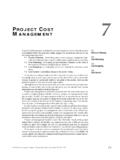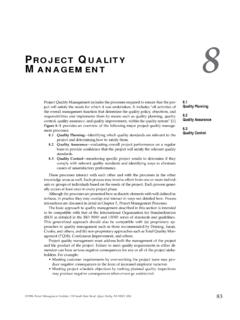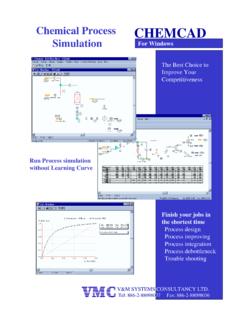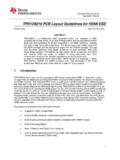Transcription of Autonomously driving trains on open tracks …
1 Autonomously driving trains on open tracks concepts, system architecture and implementation aspects Oliver Gebauer 1), Wolfgang Pree1), Burkhard Stadlmann2) 1) University of Salzburg, Austria 2) University of Applied Sciences Wels, Austria Abstract This paper describes a cyber-physical system that we called autoBAHN1 as well as some economic and legal aspects for the realization of the vision of a driverless train operating on openly accessible existing railroads, particularly regional branch lines. Existing autonomous trains , for example in use on airports, do not need obstacle recognition because they operate on closed tracks that cannot be accessed by humans and have no intersections with roads.
2 The vision is to economically offer a train frequency of ca. 10 minutes on regional branch lines. This requires more, but smaller trains . As it would not be economically feasible to operate them with human drivers, they need to be autonomous. As it would again not be economically feasible to change the infrastructure (from open to closed tracks ), the autonomous trains need to recognize potential obstacles on or near tracks analogous to autonomous cars. First we describe how train intervals of ca. 10 minutes comparable to urban public transport systems can be achieved on single-track railroads.
3 This implies a significantly improved comfort for passengers by dissolving the traditional schedule concept of trains . What kind and degree of changes in infrastructural equipment is necessary was validated with the help of a discrete event simulation. The focus of the paper is on the overall system architecture of the prototypical autonomous train that we have implemented and in particular on obstacle recognition based on a lean yet powerful algorithm for sensor fusion. Finally, the current legislation in German speaking countries is surveyed for the assessment of whether an Autonomously operating railway system can become reality in the future.
4 1 Motivation and related work 1 auto for autonomous; BAHN is the German word for rail(road) 2 What we have called the autoBAHN system aims at offering a tramway frequency of Autonomously driving vehicles on freely accessible and usually single-lane regional railway tracks . The autoBAHN system comprises obstacle recognition and train control by means of sensors, actuators, and radio communication as part of a complex cyber-physical system which has to fulfill the strict quality standards for accreditation of railway systems according to CENELEC.
5 The autoBAHN system should make regional railways attractive again. The train frequency has a significant influence on the acceptance of public transport. With the visionary autoBAHN system , a train arriving every ca. 10 minutes can be realized and at the same time economic parameters of operating regional railways can even be improved. Increasing the train frequency requires more, but smaller vehicles. The additional costs for drivers would not be economically feasible. Therefore, the autoBAHN system has to be operated Autonomously .
6 Existing Autonomously operated rail systems such as on airports (so called people mover ) or subways require the physical fencing in of railroads as no obstacle detection is used. This physical fencing would again not be economically viable for regional lines. Thus, the autoBAHN system uses an obstacle recognition to avoid the fencing in of the tracks or similarly effective measures for closing the tracks . Overview of other autonomous driving systems The track-guided rail transport system offers important advantages for automation because a train cannot leave the track in regular operation.
7 A road vehicle does not only have freedom of movement within the travel path, but it can leave it with little change in the tracking or due to road damages, inconsistent roadway markings and many other irregularities. In other words, its environment is less homogeneously defined than that of railroads. These features suggest that the automation of railways is more straight-forward compared to road traffic. Since there exist already car driver assistance systems for track and distance control, braking assistence, blind spot monitoring, night vision support, traction control, automatic parking and other tasks, and research prototypes of fully autonomous cars [THRUN2008], efforts to automate the railway traffic are overdue.
8 There have already been various initiatives aiming at the automation of passenger- and cargo rail traffic. For cargo traffic the following projects are a selection of representative research efforts in Germany in that direction: the Cargomover system from Siemens (see [CARGOMOVER1]), a self organizing cargo traffic system suggested by Prof. Frederich (see [FREDERICH1994] [FREDERICH1997]), the Selbstt tig signalgef hrte Triebfahrzeug (SST) (see [FREDERICH1996]) and the project Innovativer G terwagen (IGW) of the Deutsche Bahn AG (see [EISENB1997]).
9 But none of them got an approval and became a product. One reason might be that these autonomous trains would have operated in a mixed mode along 3 with regular trains . Mixed type traffic is an additional operational, technical and economical barrier. In Australia, the mining company Rio Tinto, plans to introduce driverless trains for transporting iron ore in 2014 [REF: ]. We found no description of its socalled AutoHaulTM system . In particular, it is not published whether AutoHaulTM will use obstacle recognition.
10 For passenger traffic the RailCab Neue Bahntechnik Paderborn (short RailCab) presented a new concept for the automation of railway traffic. In this concept vehicles for 10-12 passengers should travel on a significantly adapted railway network. Due to the envisioned use of obstacle recognition, which was to our knowledge not implented so far, the fencing in of the track would be unnecessary. The required adaptions stem from the propulsion system , which should be a linear motor. It requires the installation of electromagnets into the rail bed with costs of estimated Euro 2-3 Mio.










